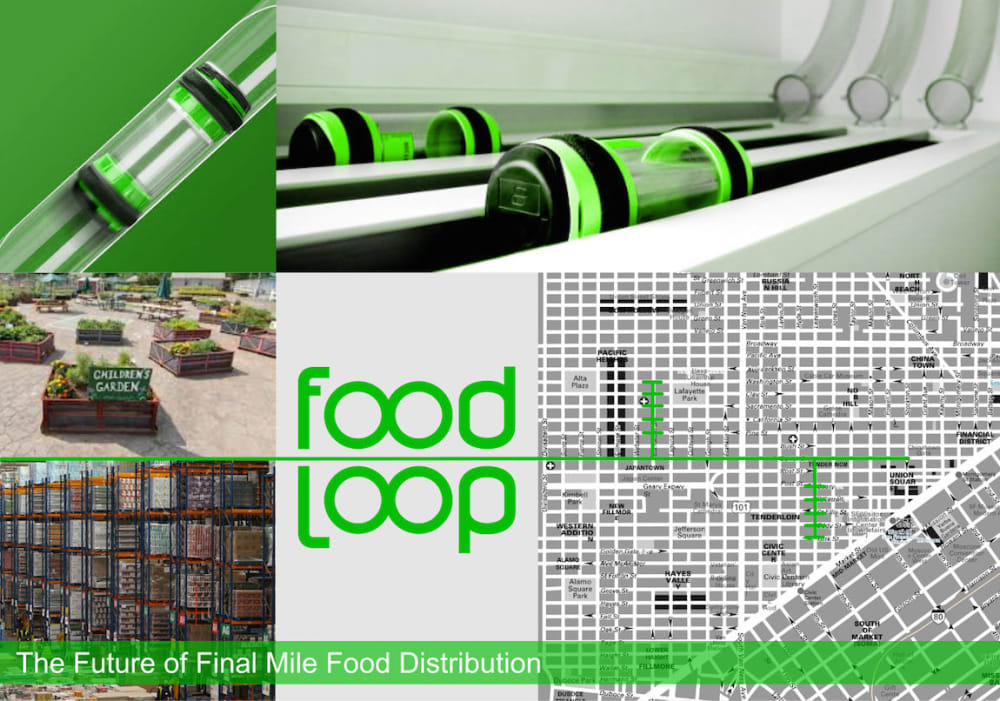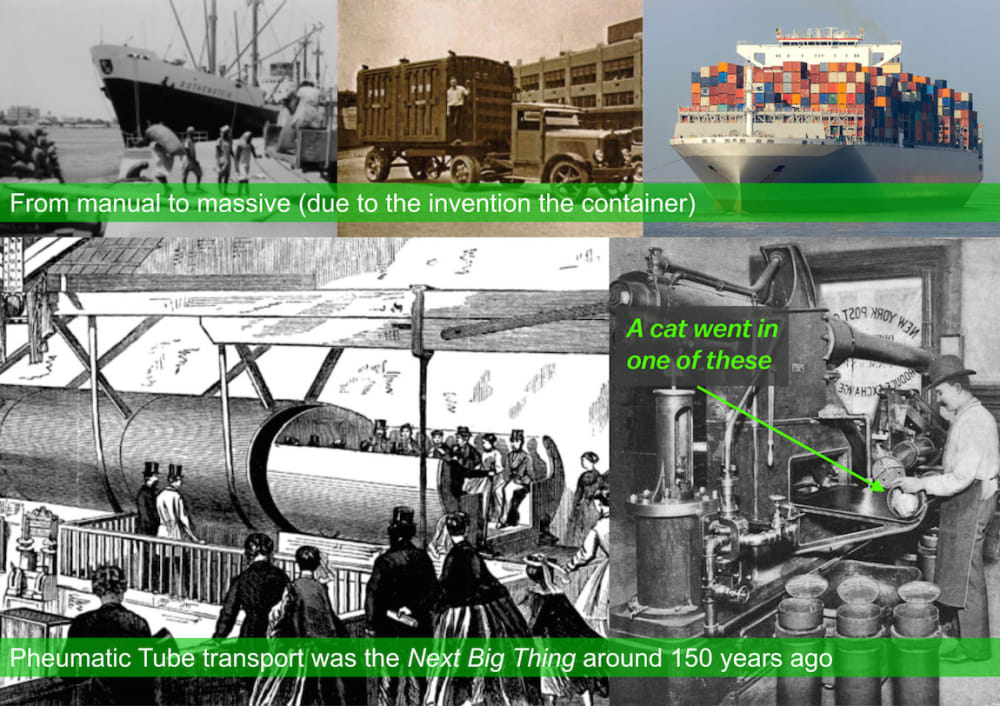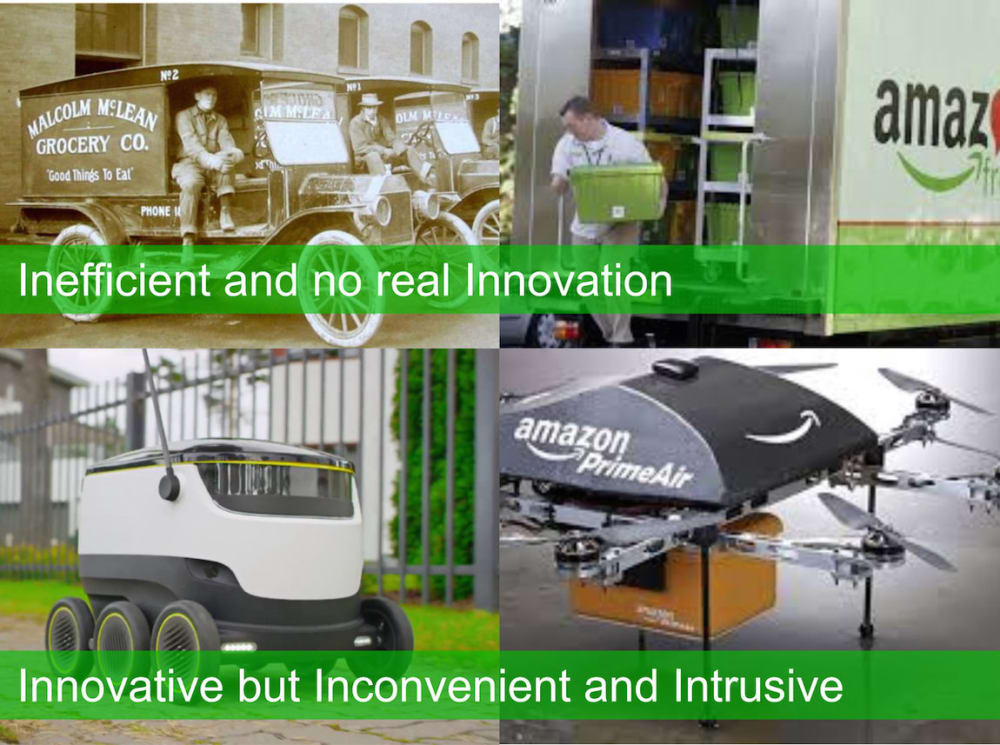Estimates show that the final leg (“The Final Mile”) of delivery can comprise more than 25% of a product’s total transportation cost.
Shopping for groceries is time consuming and inefficient. It simply does not make much sense to use a 2,000 kg car with a 100 kg person to collect (or deliver) 2 kg of groceries.
New transport systems for human beings (such as Hyperloop) is fundamentally a “nice to have” concept; in our day and age people do not need to physically meet on a daily basis (they can even reproduce without meeting).
However, human beings do need to ingest food on a regular basis. Bringing food within physical grabbing distance of humans is a “need to have.” FoodLoop suggests a new (or rather reengineered) Pneumatic Tube Transport system for cities. FoodLoop facilitates the distribution of food from warehouses/urban farmers to individual homes via a new infrastructure of standardized tubes and transport canisters of an adequate size to transport commonly sized consumer goods. Food scraps and used packaging are placed in packed in the empty canisters.and literally sucked back into the eco-system for re-use
New cost-efficient ways of drilling tunnels as well as IT-technology (e.g. control, tracking and payment systems and route optimization algorithms) make the FoodLoop tunnel infrastructure feasible.
FoodLoop makes Consumer Goods Fast Moving!
Like this entry?
-
About the Entrant
- Name:Soren Jensen
- Type of entry:individual
- Software used for this entry:Graphics software
- Patent status:none








